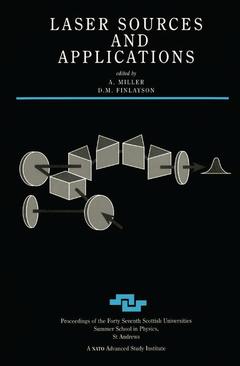Description
Laser Sources and Applications
Scottish Graduate Series
Coordinator: Miller A.
Language: English
Subjects for Laser Sources and Applications:
Keywords
Group Velocity Dispersion; Nonlinear Optical; ultrashort pulse generation; Optical Parametric Oscillators; nonlinear optical interactions; Solid State Lasers; Diode Laser; semiconductor lasers; Self-phase Modulation; soliton optical communications; Diode Pumping; Nonlinear Crystal; Stimulated Raman Scattering; Chirped Pulse Amplification; Gain Media; Nonlinear Susceptibility; Optical Pulses; Phase Matching Condition; Quasi-three Level Lasers; Pump Power; Mot; Fibre Lasers; Saturable Absorber; Zblan Fibre; Colour Centre Laser; EIT; Nonlinear Optical Susceptibility; EIT Effect
· 15.6x23.4 cm · Hardback
Description
/li>Contents
/li>Readership
/li>Biography
/li>Comment
/li>




